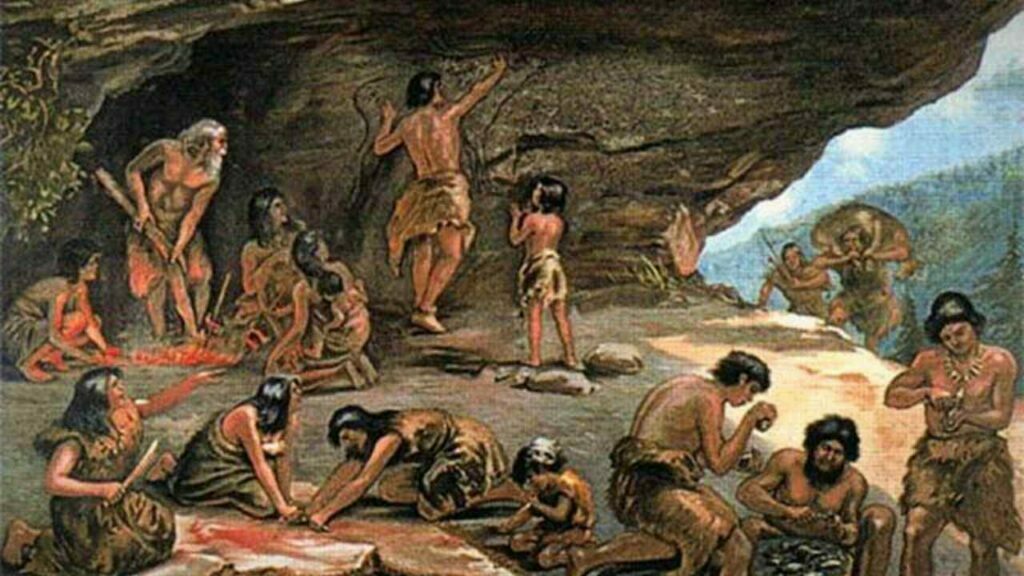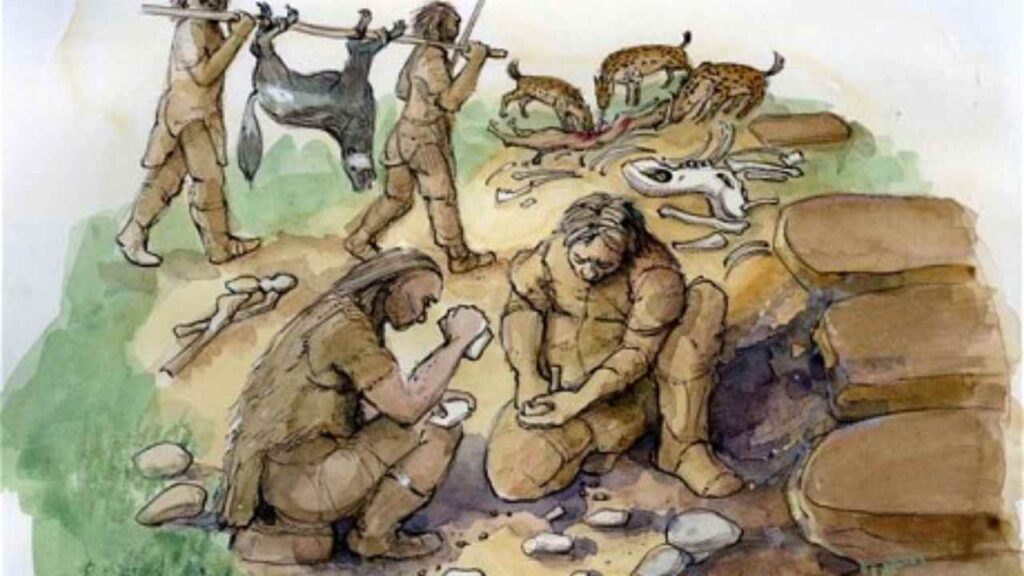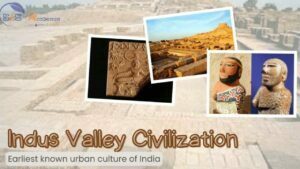Pre Historic period in India
Pre historic period in India
The history of human settlements in India dates back to the prehistoric times that are marked by the stone age, bronze age, and iron age. There are no decipherable written records available for this period of history, hence it is known Pre-History. The available knowledge about the prehistoric times is based on some archaeological evidences like stone tools, artifacts, pottery etc used by prehistoric people that were found from many excavations.
The credit for doing an early extensive study of Indian pre-history goes to ROBERT BRUCE FOOTE, who discovered the first Palaeolithic tool in India- PALLAVARAM HANDAXE.
On the basis of geological age, type and technology of stone tools used, the pre historic period in India or the Indian Stone Age is classified primarily into 3 types:
- Old Stone Age – PALAEOLITHIC AGE
- Late Stone Age – MESOLITHIC AGE
- New Stone Age – NEOLITHIC AGE
Old Stone Age - PALAEOLITHIC AGE
The term ‘Palaeolithic’ is derived from the Greek word ‘palaeo’ which means old and ‘lithic’ meaning stone. Therefore, the term Palaeolithic age refers to the old stone age. The palaeolithic culture of India developed in the Pleistocene period or the Ice Age, which is a geological period of the age when the earth was covered with ice and the weather was so cold that human or plant life could not survive. But in the tropical region, where ice melted, the earliest species of men could exist.

- It was spread across all parts of India except in the alluvial plains of Indus and Ganga.
- They had no knowledge of Agriculture, house building, pottery or any metal.
- It was only in the later stages that they attained the knowledge of fire.
- They used tools of Unpolished, undressed rough stones made of hard rocks called QUARTZITE, and hence these men were called the QUARTZITE MEN.
- Palaeolithic age can be divided into 3 time periods:
- Lower Palaeolithic Age(upto 1,00,000 BC) which covers the greater part of ice age. Bori in Maharashtra is the earliest known lower Palaeolithic site in India.
- Middle Palaeolithic Age (1,00,000-40,000 BC)
- Upper Palaeolithic Age (40,000-10,000 BC). This period coincided with the last phase of the ice age when the climate became comparatively warmer and less humid.
- Some of the famous sites of old stone age in India are:
1) Soan valley and Potwar plateau in northwest India.
2) Shiwalik hills in north India.
3) Bhimbetka in Madhya Pradesh.
4) Adamgarh hill in Narmada valley.
5) Kurnool and Muchchatla Chintamani Gavi in Andhra Pradesh.
6) Attirampakkam near Chennai.

Late Stone Age - MESOLITHIC AGE
The term Mesolithic is derived from two Greek words – ‘meso’ which means Middle and ‘lithic’ which means stone. Hence, the Mesolithic Age of prehistory is also known as the ‘Middle Stone Age’. It belongs to HOLOCENE ERA and during this era there was a rise in temperature, the climate became warmer resulting in melting of ice which brought changes in flora and fauna.
- Reduction in size of well-established tool types.
- The characteristic tools of this age were MICROLITHS (miniature stone tools).
- Pottery was absent at most Mesolithic sites but it was present in Langhnaj in Gujarat and in Kaimur region of Mirzapur (UP).
- The Mesolithic era initiated the rock art in pre-history.
- Animals dominate the scenes at most Mesolithic rock art sites.
- The use of bow and arrow began during this time.
- The people of this age lived on hunting, fishing and food gathering initially but later on they also domesticated animals and cultivated plants, thereby paving the way for agriculture.
- The people of this era believed in life after death and hence they buried the dead with food items and other goods.
- Some important Mesolithic sites are:
1) Bagor, Rajasthan on river Kothari is one of the largest and best documented Mesolithic sites in India.
2) Both Adamgarh, MP and Bagor provide earliest evidence for domestication of animals.
3) Mahadaha,UP , where bone Artefacts were found.

New Stone Age - NEOLITHIC AGE
The term Neolithic is derived from the Greek word ‘neo’ which means new and ‘lithic’ meaning stone. Thus, the term Neolithic Age refers to the ‘New Stone Age’. It is also termed as ‘Neolithic revolution’ since it introduced a lot of important changes in man’s social and economic life. The Neolithic age saw man turning into a food producer from food gatherer.
- Advent of food production– They cultivated land and grew fruits and corn like ragi and horse gram and domesticated cattle, sheep and goats.
- Innovations in Technology– Innovated in production of stone tools such as polished, pecked and ground stone tools. They depended on polished stones other than quartzite.
- Invention of Pottery– First made pottery by hand and then with the help of potter’s wheel. Their pottery included black burnished ware, grey ware and mat-impressed ware.
- Emergence of self-sufficient village communities: they lived in circular and rectangular houses made of mud and reed. They also knew how to make boats and could spin cotton and wool and weave cloth.

- Some important excavated Neolithic Sites are:
- Burzahom (unique rectangular chopper, domestic dogs buried with masters) and Gufkraal (famous for pit dwelling, stone tools and graveyards within households) in Jammu & Kashmir.
- Piklihal (Proof of cattle herding), Budihal (community food preparation and feasting), maski, Brahmagiri and Tekkalakota in Karnataka.
- Chirand (considerable use of bone implements) in Bihar.
- Mehrgarh (earliest Neolithic site known as the BreadBasket of Baluchistan)
- Koldihwa in Bellan Valley (presence of a 3- fold Neolithic, Chalcolithic and Iron age settlement)
- Mahagara (earliest evidence of rice cultivation in the world) near Allahabad.
- Bellan Valley (evidence of all 3 phases of Palaeolithic settlement followed by Mesolithic and Neolithic settlement)

CHALCOLITHIC AGE
The Chalcolithic Age marked the emergence of the use of metal along with stone tools. The first metal to be used was copper. In majority of our country, this phase is applicable to the pre-Harappan phase, but in many parts of the country, it appears after the end of the bronze Harappan culture.
- This period is considered as a transitional period between the Neolithic Age & the Bronze age.
- Unique feature of this period was painted black pottery as well as Red Ware.
- This age also marked the beginning of social inequalities, as chiefs lived in rectangular houses while the commoners lived in round huts.
- The chalcolithic people were expert coppersmiths. They knew the art of copper smelting and were good stone workers as well. They knew spinning and weaving and were well acquainted with the art of manufacturing cloth.
- Some important Chalcolithic sites are:
- Ahar & Gilund in banas valley, Rajashtan
- Malwa & Kayatha in Madhya Pradesh
- Navdatoli in Narmada Valley

The Knowledge Hub is intended for a wide range of audiences, including students, professionals, and anyone who is curious about the world and wants to expand their knowledge base. It can be useful for research, education, and personal curiosity. The Knowledge Hub is constantly updated to reflect the latest information and insights, and our visitors are encouraged to check back often for new content. Thank You.
We also have live online classes where we teach 2 courses which are given below. Please go through them and if interested you can take a Free Trial Class.






